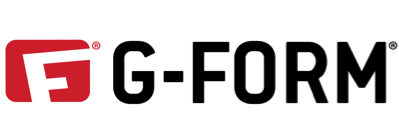Day 3 of the 2023 MLB Draft will see Rounds 11 through 20 take place at T-Mobile Park. There are still a healthy dose of college standouts available for teams to pick early on Tuesday afternoon. It should be noted, college players are far more likely to be drafted at this stage in the draft as bonus pools get smaller and high school players are far more likely to turn down smaller dollar figures in favor of going to college.
MORE: Top 10 High School Players available
Draft Order & Slot Values | Team Bonus Pools
Here are the Top 30 college players available according to the Future Stars Series PLUS Top 614 Prospects, as well as their overall ranking in the class.
| RANK | PLAYER | POS | SCHOOL |
|---|---|---|---|
| 86 | Kade Kern | OF | Ohio State |
| 89 | Tanner Witt | RHP | Texas |
| 121 | Lebarron Johnson | RHP | Texas |
| 136 | Jared Dickey | C/OF | Tennessee |
| 138 | Christian Little | RHP | LSU |
| 139 | Hayden Durke | RHP | Rice |
| 149 | Josh Grosz | RHP | East Carolina |
| 150 | Jordan Thompson | SS | LSU |
| 164 | Terry Busse | RHP | Georgia Tech |
| 170 | Khristian Curtis | RHP | Arizona State |
Kade Kern put up impressive average and 90th percentile exit velocities as a freshman in the Big Ten, which, combined with good contact rates, allowed him to get on base at-will for the Buckeyes. However, Kern continued his trend of struggling to get his power into games on the Cape, and was a bit overwhelmed by the advanced pitching there and had some swing and miss issues.
He did show quick hands in the box, and can pull them in to drive fastballs on the inner third. he displayed strong defensive chops in right field for Wareham, and has the tools to play in his natural spot of center field long-term.
Tanner Witt has the prototypical size scouts want to see, as well as the huge stuff to go along with it. A premier prospect since his high school days, Witt is a good athlete who some felt truly had a future at third base with big power potential. He’s a good runner considering his size and the body moves free and fluid. The projection here is massive.
Witt’s arsenal starts with the fastball that’s been up to 96 mph, though it sits in the low-to-mid 90s for now. It’s a super-vertical four-seamer with top-of-the-scale riding characteristics, albeit the effectiveness diminished a bit by Witt’s nearly 7-foot release height.
His 12-6 bender is his best secondary pitch with big spin rates and above average velocity, though he’s yet to show a strong feel for throwing the pitch for strikes and doesn’t induce a whole bunch of swing-and-miss on it yet.
Witt has a bit of a show-me delivery with a double hand-break move that, if eliminated and brought into the body, could help produce more deception and whiffs on his FB/CB tunnel. He missed most of 2023 recovering from Tommy John, but is as good a bet as anyone to see a massive jump in stuff and production in pro ball.
Lebarron Johnson is an extremely physical right-handed reliever with the huge stuff and upside to fit the prototype. The fastball can get up to 98 mph, sitting 94-96 over one-inning outings with significant ride through the zone.
Because of his outlandishly high release, scouts like the upside of his two-seam fastball situationally as he presents the steepest vertical approach angle of any arm available in the 2023 MLB Draft. It could be a real weapon. He also throws a hard slider in the upper-80s, touching 90.
Johnson has the makings of a high-octane late-inning reliever if he can improve his strike-throwing ability and polish up the breaking ball, including upping its usage. The arm talent is undeniable.
A part-time player in 2022, Jared Dickey is a converted catcher with a big, strong body and a professional approach at the plate. He’s got legitimately huge raw power and an up-the-middle approach that has helped him stay away from cold streaks.
Dickey is a future middle-of-the-order slugger who draws a significant amount of walks and could potentially run into 30+ homer campaigns as a professional. He’s best suited for a corner outfield spot or first base where his fringy speed and fringy glove fit best. That said, Dickey’s above average arm will play anywhere.
Christian Little will be young for the 2023 class having been eligible as a prep in 2021. He decided to enroll early at Vanderbilt and immediately entered the rotation as a midweek anchor for the Commodores. He then transferred to LSU where he’s found more success by leaning on a very good breaking ball.
The fastball can get up into the high-90s, though more comfortably sits in that 92-95 mph range for now. It has a lot of metric traits about it that teams will covet, and his deception forces opposing hitters to chase the pitch out of zone at alarming rates.
That said, the next step in his development will be missing more bats in the zone with the pitch. Little has a promising firm curveball with good spin rates, though he’ll need to continue refining his ability for consistent shape and command of the pitch. He also shows feel for a changeup that is used almost exclusively to left-handed hitters.
Hayden Durke has pretty insane pitch data and has worked into the upper-90s, grabbing 99 on the Cape this summer, sitting 95-97. The breaking balls are just as diabolical featuring a mid-80s curveball and an upper-80s slider. Both of those project plus comfortably.
While durability and consistency have both come and gone for the young righty, teams know all about the upside and Durke could represent one of the bigger upside relief plays in this class.
There’s not a huge track record here, but he can really spin a baseball and has been a high-follow in scouting offices for quite some time. He could move extremely quickly.
Josh Grosz is awfully young for the 2023 class. He won’t turn 21 years old until September. The package here revolves around a low-90s fastball with significant hop and carry through the zone with above average wpin rates and tremendous arm-side run. It’s been especially difficult on left-handed hitters, and Grosz isn’t even commanding the pitch to the top of the zone with much authority yet.
He has better feel for a mid-80s slider that features short two-plane tilt and comes off the fastball plane late. It’s another high-spin offering up to 86 mph. There’s also a curve and a splitter here, but they lack feel and command right now.
Grosz has a herky jerky motion out of the stretch that’s led to some issues, though he presents a much more athletic look from the windup. For now, the jury is out whether he can start at the next level, but considering his age, size, athleticism and feel for an arsenal, he’ll certainly get the chance to start moving forward. Tempo should be addressed at the next level, but the pure stuff here, especially the fastball quality, is eye-popping.
Jordan Thompson is a bit of a do-it-all shortstop with west coast flair and some thunder in the bat. He’s an aggressive hitter who hardly ever walks, though he limits his strikeouts as well. He has yet to truly grow into his body and has some power projection still ahead, though most evaluators believe there will eventually be just fringe-average game thump thanks to a longer swing and bat path.
Thompson is an accomplished shortstop who projects solid average or better at the next level with a capable throwing arm. He’s an average runner who won’t contribute a ton of excess value on the bases, but certainly won’t be a detriment either. Thompson grades out average in a lot of categories and could see his name vault with some strength gains and more mature at-bats.
Terry Busse, a JUCO transfer into Georgia Tech for the 2023 season, is a tunneling machine with a sinker-slider combo, the two offerings jumping in opposite directions. It’s a really tough look for hitters. The sinker is mostly a low-90s offering over long outings, ordinarily 92-94 mph, but he’ll grab 96 at times when he lets it rip.
Busse used to be a four-seam/curveball guy, but ditched that profile following the MLB Draft League in 2022. Busse projectsHe now to throw 96-98 in relief should he go that direction in pro ball. He’ll mix in a changeup, especially to lefty bats, that still has room to develop in terms of consistency and pitch shape.
Khristian Curtis was a bit of a revelation in 2023 after transferring from Texas A&M to Tempe. He worked up to 97 mph this season with significant arm-side run, a fastball he was willing to bore in on righties or tail away from lefties.
The slider is awfully firm, thrown up to 88 mph with depth and gyro shape. The changeup may be his best weapon with top-of-the-scale fading action, thrown in the low–80s; plenty of separation off the heat.
Curtis has plenty of projection in front of him, packed into a 6-foot-5-inch, 195-pound frame. He’s got a big up arrow next to his name and could hear his name called early.
| RANK | PLAYER | POS | SCHOOL |
|---|---|---|---|
| 195 | Sebastian Gongora | LHP | Wright State |
| 196 | Nigel Belgrave | RHP | Maryland |
| 198 | William Privette | RHP | College of Charleston |
| 203 | Landon Wallace | OF | West Virginia |
| 213 | Ethan Bates | RHP | Louisiana Tech |
| 225 | Cam Clayton | 2B/SS | Washington |
| 226 | Brett Banks | RHP | UNC Wilmington |
| 232 | Garret Guillemette | C | Texas |
| 236 | Colson Lawrence | RHP | South Alabama |
| 239 | Logan Evans | RHP | Pittsburgh |
Sebastian Gongora is a prototype southpaw with a high waist, long levers and a delivery that should lend well to stay in a rotation at the next level. He lives in the low-90s, touching 95 mph with a tumbling changeup that tunnels well off the heat. Both of the breaking balls are largely fringe-average offerings, though Gongora struggles to get a ton of swing-and-miss at this stage.
Still, it’s clearly upwards trajectory coming out of a premium-bodied lefty. Big up arrow here if a team believes they can help polish up his secondary offerings.
Nigel Belgrave burst onto the scene in 2023 for the Terps, flashing upper-90s velocity and a hammer breaking ball, showcasing massive winter gains. Belgrave comes packed into a long, athletic frame and really showcases his athleticism on the mound. He’s still working on repeating his delivery and developing a third weapon, but for now, the fastball-slider combo provides a pretty solid floor.
The slider inparticular features a ton of sweep and some depth and is thrown with conviction in the mid-80s. There’s more in the tank coming for Belgrave too.
William Privette is a relief-only analytic darling with a super-unique fastball that really carries through the zone like very few fastballs can. He’ll sit in the upper-80s, grabbing a few readings that start with a 9, but the hop through the zone allows the pitch to play up.
Privette has a slingshot, over-head delivery that hides the ball well. He does offer a loopy, low-70s curveball that he can get ahead of hitters with, but it lacks the bite or velocity to put hitters away with consistency. For now, he’s mostly a one-pitch guy, but the unique traits on his fastball and the projection on his body could see his name called toward the end of day to as a money-mover.
Landon Wallace is one of the best kept secrets in college baseball this season and has done more than enough to warrant a top-five round selection in the 2023 MLB Draft. This kid absolutely pummels fastballs with high velocity in the strikezone.
There aren’t a lot of red flags in Wallace’s profile. Defensively, he’s a solid average left fielder who takes very good routes to the baseball and has made some highlight reel plays on awkward sinking line drives hit right at him. It’s a fringy arm and above average speed, though he’s unlikely to ever be truly plus out there.
It’s easy to dream on his 6-foot-2-inch, 170-pound frame too. There’s more impact coming here, and it’s plain and evident when you watch him operate in the box. It’s long limbs with twitchy hips. This is going to be an impactful bat with 15 more pounds. He already walks a ton, and he’s kept his strikeout rate south of 20 percent, too.
Wallace still has some work to do in handling breaking balls in the strike zone, but this is what projection looks like and it’s the type of profile that should excite front office decision makers. ”
Ethan Bates has taken a winding road to Louisiana Tech. A one-time Arkansas Razorback, he transferred out after his freshman year, taking the JuCo route. He landed at Tech in 2023 and immediately became a weapon both on offense and on the mound.
His future is likely in a professional bullpen where his slider has the makings of a plus weapon. It’s a mid-80s sweeper with considerable depth when he can get over the top of the pitch. It was one of the best performing breaking balls in college baseball in 2023.
Bates has a low-90s fastball that’s grabbed 96 with considerable arm-side life. It hasn’t missed a ton of bats, but the threat of his velocity does allow the breaker to play up. Bates projects a day three pick who could move quickly.
Cam Clayton doesn’t hit the ball terribly hard, but he sure does hit the ball a lot. He ranked among the best in the entire country in 2022 as a true freshman with a 93% contact rate on swings in the zone. That’s elite. He’s a lean-bodied infielder with good balance and rhythm to his game. He’s got enough athleticism to handle any infield spot, including the shortstop position as he matures into the next level. I
f teams believe they can unlock a bit more thump in Clayton’s game, he’s got a shot to go in the middle of day two of the draft, maybe a tick earlier. A true sophomore, Clayton is draft-eligible before he turns 21 years old.
Brett Banks, by Stuff+ models, has some of the most intriguing stuff in college baseball. He’ll rush it up to 98 mph and will sit 94-96 with enormous carry, but the command can be buckshot at times. The slider has real teeth, too. He can frisbee the breaking ball into the zone in the mid-80s, and touch 87 with steep angle and some sweeping action. It tunnels well off the fastball and can be a real one-two punch.
Banks has some length and timing inconsistencies on the backside of his arm action and that may be contributing to some of his command woes. If he irons that out, he’s got a high-leverage profile with the potential for two real weapons.
Garret Guillemette, a transfer out of Southern California, took the reigns behind the plate with the departure of Silas Ardoin this season and never looked back. He’s an accomplished contact hitter who sprays the ball all over the park.
He hardly ever strikes out and has some pull-side thunder if a pitcher leaves something soft spinning over the plate. Guillemette has defensive tools,too. He’s quick out of the crouch and possesses an above average arm. He projects to stay behind the plate at the next level and could hit enough to command considerable playing time as a full-time backstop or heavily-used platoon option.
Colson Lawrence is a two-way guy whose future is on the mound featuring a putaway slider and budding velocity. He hasn’t been pitching long, but the results have been loud.
Lawrence has been up to 95 mph with a high-spin heater showing considerable carry. It’s been a highly effective fastball. It’ll really come down to whether a team buys into the small sample, but analysts will like Lawrence’s stuff. He’s got leveragable traits and a great frame to help develop even more stuff in pro ball.
Logan Evans is a spin-monster featuring a two-seam fastball with spin rates north of 2600 rpm at times, as well as a slider north of 3000 rpm at it’s peak.
Evans features two potential plus pitches if deployed correctly at the next level. The sinker features mammoth amounts of arm-side boring action. He’ll shatter the knuckles of righties and cue ball left bats at will. He’s been up to 96 with that pitch, though he more commonly rests 92-93.
The slider is a deep, gyro slider with a bit of sweep thrown in the 82-84 mph bucket. It’s mostly a relief profile, though he did start several games for the Panthers in 2023. Evans is on the older side, a 22-year-old junior, so he lacks leverage.
He’ll likely end up a money-guy toward the end of day two, or a day three reliever who could move quickly. Scouts want to see Evans learn to front-door his pitches to the opposition as to get them off of his impressive, albeit predictable arsenal at times.
- The 2025 free agent class suggests a big trade deadline is coming in July - May 2, 2024
- Comparing key metrics for the top 2024 draft-eligible college bats - May 1, 2024
- 2024 MLB Draft: Mock Draft 4.0 - April 17, 2024


















